Colorado, with its diverse landscapes ranging from rugged mountains to lush forests, is a haven for a variety of wildlife. Among its many charismatic inhabitants, deer hold a special place. These graceful creatures, known for their majestic antlers and gentle demeanor, are a symbol of the state’s untamed natural beauty. From the iconic Rocky Mountain mule deer to the elusive white-tailed deer, Colorado’s diverse ecosystems provide a home for several deer species.
This article is an expedition into the captivating world of animals like deer in Colorado, offering a glimpse into their lives, habitats, behaviors, and the vital role they play in the state’s ecosystem. We invite you to join us on this journey through the picturesque landscapes where deer roam freely, understanding their importance and the measures in place to ensure their conservation in the heart of the Centennial State.
Table of Contents
Overview of Colorado’s Diverse Wildlife:
Colorado, often dubbed the “Centennial State,” is a geographical marvel boasting a diverse array of wildlife. Situated in the heart of the American West, it encompasses a wide range of ecosystems, from the towering peaks of the Rocky Mountains to the expansive high plains and mesas. This diverse topography creates distinct habitats, nurturing a rich variety of fauna.
The state is home to an incredible range of animals, including iconic species such as black bears, mountain lions, bighorn sheep, elk, and of course, various deer species. Colorado’s rivers and lakes are teeming with aquatic life, hosting fish like cutthroat trout and Colorado pikeminnow. Birdwatchers flock to the state to observe an abundance of avian species, from the majestic bald eagle to the elusive Gunnison sage-grouse.
The unique blend of flora and fauna in Colorado contributes to its ecological significance and provides ample opportunities for nature enthusiasts and researchers to study and appreciate the intricacies of the natural world. Preserving this biodiversity is a shared responsibility to ensure future generations can continue to admire and coexist with the splendid wildlife that graces Colorado’s landscapes.
Elk (Cervus canadensis):
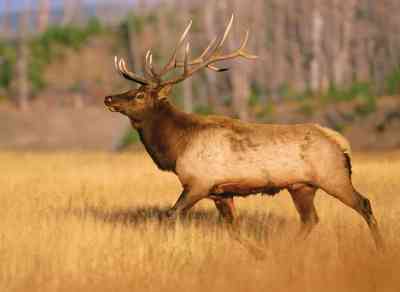
The Rocky Mountains of Colorado echo with the bugling calls of the elk, captivating the hearts of both nature enthusiasts and wildlife lovers. These magnificent creatures, closely related to deer, are one of the most iconic and sought-after sightings in the state. Colorado hosts a significant elk population, drawing in visitors from around the world for the chance to witness their majestic antler displays and observe their behavior during the rutting season.
Elk play a crucial role in the state’s ecosystems as grazers, shaping vegetation dynamics and supporting other wildlife species. Their adaptability to various habitats, from lush meadows to rugged mountains, showcases their resilience and versatility in the wild. Conserving the elk population and preserving their habitats are vital efforts to maintain the ecological balance and ensure future generations can witness the awe-inspiring presence of these stunning creatures.
Mule Deer (Odocoileus hemionus):

The mule deer, an emblematic species of the American West, thrives in the diverse landscapes of Colorado. Their keen senses and distinctive bounding gait make them a captivating sight for wildlife enthusiasts exploring the state’s terrain. Colorado is home to a robust population of mule deer, and their adaptability to different environments, from sagebrush steppe to alpine meadows, underscores their significance in the state’s ecosystems.
Observing mule deer, with their impressive antlers and graceful movements, is a cherished experience, whether it’s during their migratory patterns or the autumn rutting season. Conservation efforts, including habitat protection and management of their populations, are essential to ensure the continued presence of mule deer in Colorado’s wilderness and to maintain the ecological balance that they contribute to.
White-Tailed Deer (Odocoileus virginianus):
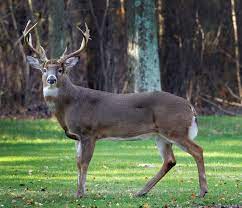
The white-tailed deer, although more prevalent in eastern regions of the United States, also graces the landscapes of Colorado. Their name comes from the distinctive white underside of their tails, which they flash as an alarm signal. While not as abundant as mule deer in the state, white-tailed deer are a significant part of Colorado’s fauna, residing in habitats ranging from forests to grasslands.
Their adaptability and ability to coexist with various wildlife showcase their resilience. Observing white-tailed deer in the wild, with their graceful leaps and attentive behaviors, is a true delight for wildlife enthusiasts and photographers alike. Conservation measures aimed at preserving their habitats and ensuring their safety from threats like habitat loss and vehicle collisions are paramount to maintaining a healthy population of these captivating creatures in Colorado.
Pronghorn (Antilocapra americana):
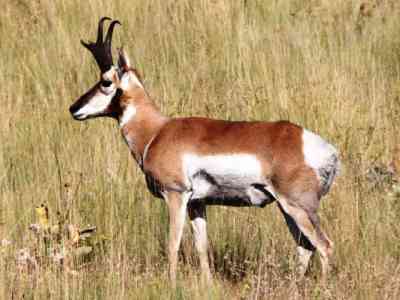
The pronghorn, often referred to as an antelope, is an emblematic species of the American West, including the expansive plains and grasslands of Colorado. Their incredible speed, often exceeding 50 miles per hour, makes them the fastest land animals in North America. Their distinctive pronged horns, found in both males and females, add to their uniqueness.
In Colorado, pronghorns are a testament to the resilience of wildlife in open landscapes. They are herbivores, feeding on grasses and forbs, and play a vital role in shaping vegetation dynamics through their grazing behaviors.
Spotting a pronghorn sprinting across the plains is a mesmerizing experience, showcasing the remarkable adaptations of this iconic species. Efforts to protect their habitats, reduce habitat fragmentation, and address human-wildlife conflicts are crucial for maintaining healthy pronghorn populations and preserving the beauty of Colorado’s grasslands.
Bighorn Sheep (Ovis canadensis):
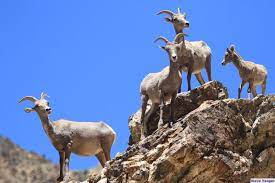
Bighorn sheep, although taxonomically distinct from deer, share the rugged and mountainous terrain of Colorado, making them a significant part of the state’s wildlife. Their impressive curled horns, adapted for clashing during mating rituals and establishing dominance, are iconic features of these majestic creatures. Bighorn sheep are adapted to alpine and subalpine environments, showcasing their prowess as climbers and their ability to navigate challenging landscapes.
Witnessing a herd of bighorn sheep traversing steep cliffs and rocky outcrops is a true testament to their resilience and strength. Conservation initiatives focused on preserving their habitats, managing populations, and minimizing human disturbance are critical for the continued survival and thriving of bighorn sheep populations in Colorado’s mountains.
Mountain Goats (Oreamnos americanus):

The mountain goat, with its distinctive white, shaggy coat and impressive horns, epitomizes the rugged alpine environment of Colorado’s mountains. Although not native to the state and introduced in the mid-20th century, they have become an integral part of Colorado’s high-altitude ecosystems.
Mountain goats are exceptional climbers, often found on steep cliffs and rocky peaks where few other animals can survive. Their adaptations, including specialized hooves for gripping rock, allow them to navigate such harsh terrains with ease.
Watching mountain goats maneuver the precipitous slopes of the Rockies is a testament to their remarkable adaptation and resilience. Conservation efforts, including managing their populations and minimizing the impacts of human activities in their habitats, are vital to ensure the well-being and sustainability of mountain goats in Colorado.
Black-Tailed Jackrabbit (Lepus californicus):

The black-tailed jackrabbit, although not a deer, shares the open grasslands and shrublands often frequented by deer for foraging in Colorado. As a herbivore, the jackrabbit plays a role in shaping vegetation dynamics and is a vital part of the state’s ecosystems. Its large ears, powerful hind legs, and incredible speed make it an agile and adapted creature in its semi-arid habitats.
While they may not possess the same grace as deer, their presence adds to the rich tapestry of Colorado’s wildlife, showcasing the diverse and fascinating range of species that inhabit the region.
Coyote (Canis latrans):
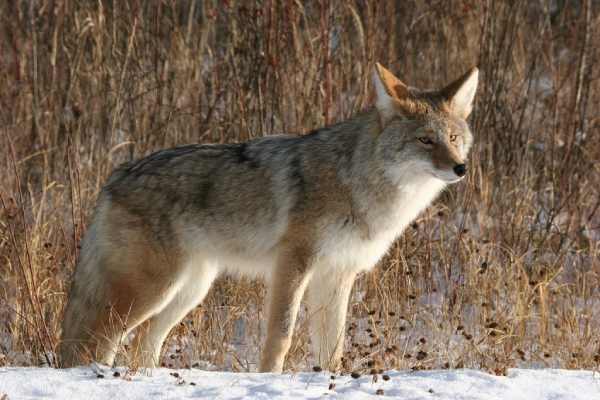
The coyote, a cunning and versatile predator, shares the habitats of Colorado with deer. Although primarily a carnivore, the coyote’s role in the ecosystem as a predator is intertwined with deer populations. They play a part in regulating deer populations by preying on deer fawns and contributing to the natural balance of predator-prey dynamics.
Their adaptability to various environments, from grasslands to forests, underscores their ability to coexist with diverse wildlife. While they might not have the same appeal as deer, coyotes are an integral part of Colorado’s wildlife and contribute to the intricate web of interactions within the ecosystem.
Final Words:
Colorado’s diverse wildlife is a treasure that enriches both the environment and the human spirit. The splendor of seeing a deer gracefully traverse its natural habitat or catching a glimpse of a bald eagle in flight is a reminder of the beauty and wonder that nature bestows. As we revel in the awe-inspiring landscapes and encounters with Colorado’s wildlife, let us strive to be conscientious stewards, promoting conservation efforts and sustainable practices that safeguard this natural heritage.
It is our collective duty to protect and preserve the habitats and species that make Colorado a haven for biodiversity. By fostering a harmonious relationship between humans and the wildlife of Colorado, we can ensure that this magnificent diversity endures, serving as a source of inspiration, education, and joy for generations to come.
Reference:
- https://coloradooutdoorsmag.com/2020/12/04/colorados-ten-big-game-species/
- https://cpw.state.co.us/documents/muledeer/coloradosmuledeerstory.pdf
- https://kdvr.com/news/local/where-can-you-find-moose-and-elk-in-colorado/

Rahul M Suresh
Visiting the Zoo can be an exciting and educational experience for all involved. As a guide, I have the privilege of helping students and visitors alike to appreciate these animals in their natural habitat as well as introducing them to the various aspects of zoo life. I provide detailed information about the individual animals and their habitats, giving visitors an opportunity to understand each one more fully and appreciate them in a more intimate way.









